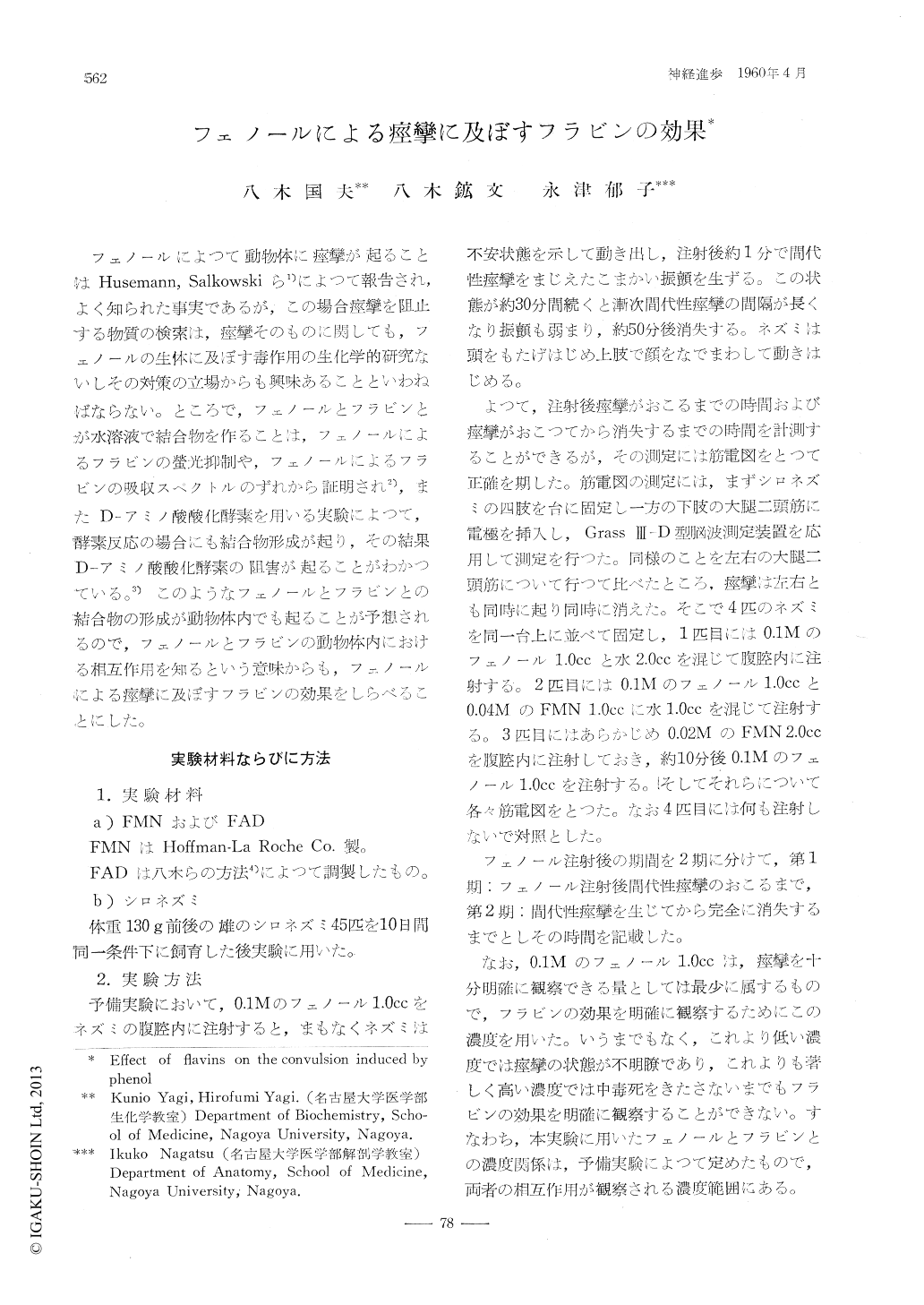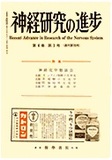Japanese
English
- 有料閲覧
- Abstract 文献概要
- 1ページ目 Look Inside
フェノールによつて動物体に痙攣が起ることはHusemann,Salkowskiら1)によつて報告され,よく知られた事実であるが,この場合痙攣を阻止する物質の検索は,痙攣そのものに関しても,フェノールの生体に及ぼす毒作用の生化学的研究ないしその対策の立場からも興味あることといわねばならない。ところで,フェノールとフラビンとが水溶液で結合物を作ることは,フェノールによるフラビンの螢光抑制や,フェノールによるフラビンの吸収スペクトルのずれから証明され2),またD-アミノ酸酸化酵素を用いる実験によつて,酵素反応の場合にも結合物形成が起り,その結果D-アミノ酸酸化酵素の阻害が起ることがわかつている。3)このようなフェノールとフラビンとのい結合物の形成が動物体内でも起ることが予想されるので,フェノールとフラビンの動物体内における相互作用を知るという意味からも,フェノールによる痙攣に及ぼすフラビンの効果をしらべることにした。
The effect of flavin derivatives on the crampcaused by phenol was studied, since the complepformation of flavin and phenol found in an aqueous solution had been demonstrated in D-aminoacid oxidase reaction mixture.
Forty five animals 10 clays after feeding underthe same condition were dividedinto three groups. Fifteen animals of the first group were injectedintra-abdominally with the mixture of 1.0ml. of 0.1 mole/1. phenol and 2.0 ml. of water. Theanimals of the second group were injected withthe mixture of 1.0 ml. of 0.1 mole/l. phenol, 1.0ml. of 0.04 mole/1. flavin mononucleotide and1.0 ml. of water. The animals of the third groupwere firstly injected with 2.0 ml. of 0.02 mole/l.flavin mononucleotide, and 10 minutes after theinjection, 1.0 ml. of 0.1 mole/1. phenol was further injected.
The cramp was observed by electromyogram ofthe muscle, biceps femoris. A needle electrodewas put into the muscle. The potential difference was recorded by Grass model III-D electroencephalograph.
The time from the injection of phenol to thebeginning of the convulsion, and that of the duration of the convulsion were measured. The datawere examined by statistics.
These results indicated that flavin mononucleotide could inhibit the provocation of pnenol convulsion and shorten the duration of the convulsion. The same experiment as above was also carriedout with flavin adenine dinucleotide, and the results showed the same tendency. These resultssuggest that riboflavin part of flavin nucleotide maybe an active component for the effect mentionedabove.
The dissociation constant of phenol and flavinmononucleotide complex was measured to be 0.12mole/1. If phenol and flavin mononucleotide wereexisted in vivo as in the same way as in the solution, it might be considered that 1/6 of phenolformed complex with blavin mononucleotide, resulting in the decrease of the pharmacologicalaction of phenol by its complex formation withflavin, as far as the complex form of the phenolwas inactive.

Copyright © 1960, Igaku-Shoin Ltd. All rights reserved.


